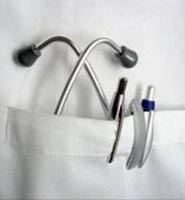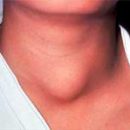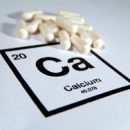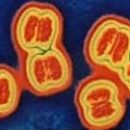Termines «acute» or «Chronic pelvis pain» Usually designate pain that occur in the lower part of the abdomen, back, in the perineum, rectum and outdoor genital organs. Chronic pelvic pain in women are treated as a syndrome characteristic of many diseases and requiring further diagnostic search.
Content
Patus — The term denoting pain that occurs in the lower part of the abdomen and back, in the perineum, rectum and outdoor genital organs. Often, pain gives over the front-inner surface of the thigh, in the area of the buttocks, wears a spilled nature and the patient is difficult to indicate where the pain is localized specifically. At the same time the sick pain — This is not a final diagnosis, but by syndrome, which can accompany many diseases and pathological conditions, is the starting point for further diagnostic search.
Acute and chronic pain in the pelvis
 Acute pelvic pain occurs suddenly, it is strong, lasts from a few seconds to several hours or even days. Unlike chronic pelvic pain, the cause of acute pain is appendicitis, diverticulitis, acute colitis, acute inflammatory processes of internal genital or urinary organs, condition of harsh insufficiency of blood circulation of the pelvis organs and intra-abdominal bleeding. For example, twist a cyst or myomatous node, an ectopic pregnancy will never cause chronic pelvic pain in women, they are always accompanied by a picture of an acute abdomen.
Acute pelvic pain occurs suddenly, it is strong, lasts from a few seconds to several hours or even days. Unlike chronic pelvic pain, the cause of acute pain is appendicitis, diverticulitis, acute colitis, acute inflammatory processes of internal genital or urinary organs, condition of harsh insufficiency of blood circulation of the pelvis organs and intra-abdominal bleeding. For example, twist a cyst or myomatous node, an ectopic pregnancy will never cause chronic pelvic pain in women, they are always accompanied by a picture of an acute abdomen.
Chronic Pain Syndrome in Women — The symptom complex, which is based on permanent or recurrent sensations, a total duration of at least 6 months. At the same time, in contrast to strong and unbearable acute, chronic pain can wear the character of tingling, cutting, burning, gravity or pressure, the pain can appear in different ways.
The mechanism of the occurrence of chronic pelvic pain
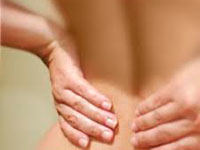 According to the statistical data of the syndrome syndrome chronic pelvic bolshared women, it is 15%. The reasons for the development of this phenomenon are studied, among them various diseases of female genital, urinary, digestive organs, musculoskeletal system. Interestingly, in the presence of the same pathology, some women develop chronic pelvic pain syndrome, and others have no.
According to the statistical data of the syndrome syndrome chronic pelvic bolshared women, it is 15%. The reasons for the development of this phenomenon are studied, among them various diseases of female genital, urinary, digestive organs, musculoskeletal system. Interestingly, in the presence of the same pathology, some women develop chronic pelvic pain syndrome, and others have no.
It is believed that the syndrome (symptom) of chronic pelvic pain may be the result of the impact of non-disabling factors, provided that the threshold of pain sensitivity is reduced. For the same principle, hyperalgesia, allodynia and spontaneous pain spasms arising at all without the participation of annoying factors.
Modern science explains syndromhronic, long-term pelvic pain arising from women, the presence of dysfunction of the central nervous system and nerve paths conducted by pain impulses in the brain. In some cases there is a decrease in activity «Antobole» Brain systems, in others — increasing the sensitivity of responsible neurons, in the third — The presence of neurogenic inflammation and constant flow «painful» impulsation from the affected organ.
In addition, it is known that the perception of acute and chronic pain, and the pelvic, among other things, have significantly influence of emotions and social factors. In women who are familiar with the syndrome of chronic pelvic pain, the symptoms of dysmenorrhea, vulvention, disparenuria often there are facts of sexual and physical violence, severe injuries, depression.
Chronic pelvic pain as a symptom of diseases
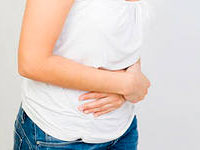 one. Gynecological diseases.
one. Gynecological diseases.
- Endometriosis;
- nonspecific chronic inflammation of uterus and appendages;
- chronic sexually transmitted infections;
- recurrent candidiasis;
- ovarian cyst, polycystic;
- Algodismenorea;
- vulvention;
- venous stagnation and varicose veins pelvis;
- the omission of the uterus and vagina;
- Benign and malignant genital tumors.
2. Urological diseases.
- Interstitial chronic cystitis;
- urolithiasis;
- Tumors of the bladder.
3. Intestinal diseases.
-
Bring, hemorrhoids, anal crack;
- irritable bowel syndrome;
- inflammation of the lower departments of the intestine;
- intestinal ischemia;
- Tumors of intestines.
4. Neurological diseases.
- spinal diseases;
- injuries of nerves;
- Metabolic neuropathy.
five. Changes peritna pelvis (spikes).
6. Pathology and injuries of hip, iliac-sacral and pubic joints.
7. Woundedness of chronic pelvic pain — Symptom of functional pain and somatoform disorder, developing after mental injury, stress, violence, against the background of depression.




